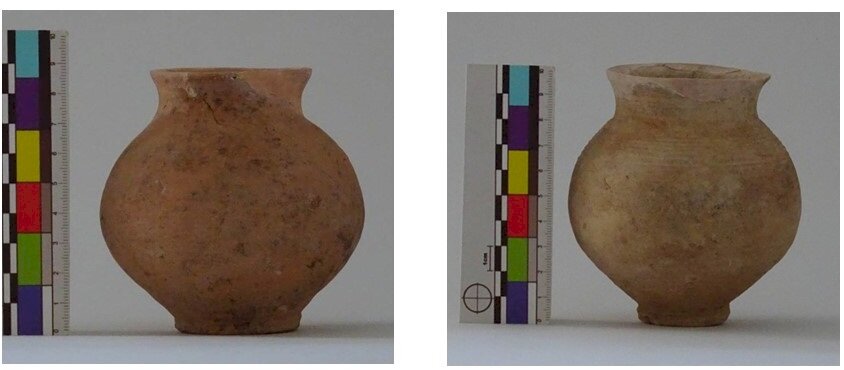11 Iron Age potteries restored in western Iran

TEHRAN – A team of Iranian cultural heritage experts in Kermanshah province has restored 11 potteries, which are estimated to date from the Iron Age.
The objects belong to a collection discovered following the Sarpol-e Zahab earthquake of magnitude 6.3, which struck western Iran near its border with Iraq on 25 November 25, 2018, a provincial official said on Saturday.
“64 pottery pieces were discovered during grading and site preparation of the quake-hit buildings…. Of the pieces, 11 has been restored now,” the official said.
“Studies suggest the cited potteries belong to the Iron Age and the first millennium BC… and all potteries are quite similar with almost the same dimensions and size.”
Iron Age is the final technological and cultural stage in the Stone–Bronze–Iron Age sequence. The date of the full Iron Age, in which this metal, for the most part, replaced bronze in implements and weapons, varied geographically, beginning in the Middle East and southeastern Europe about 1200 BC but in China not until about 600 BC, according to the Encyclopedia Britannica.
In Iran, the term Iron Age is employed to identify a cultural change that occurred centuries earlier than the time accorded its use elsewhere in the Near East, and not to acknowledge the introduction of new metal technology
As mentioned by Encyclopedia Iranica, Iron artifacts were unknown in Iran until the 9th century BC (the cultural period labeled Iron Age II), centuries after the phase designated as Iron Age I came into existence.
Iranian sites with levels identified as dating to the Iron Age were first excavated in western Iran at Sialk, and later in northwestern Iran around the west, east, and south shores of Lake Urmia, close to the Zagros mountains bordering Mesopotamia and Anatolia. These sites remain to date the best-documented full-range Iron Age sites in western Iran.
Written sources are rare at Iranian Iron Age sites, and locally written texts are non-existent. Indirect historical reference to the region begins in the 9th century BC, when Assyrian royal texts first refer to various polities in northwestern and western Iran; these references continued into the 7th century. However, relating the Assyrian-named polities with on-the-ground sites is difficult; in fact, not one excavated Iranian Iron Age site has been conclusively identified by its ancient name—although suggested identifications have been brought forth.
Furthermore, Kermanshah was once home to Neanderthals as well. It has yielded a fossilized tooth, which is a lower left deciduous canine belonging to a six years old child. It was found at a depth of 2.5 m from the shelter surface in association with animal bones and stone tools. Neanderthals were roaming over the Iranian Zagros Mountain sometimes between 40 to 70 thousand years ago.
AFM
